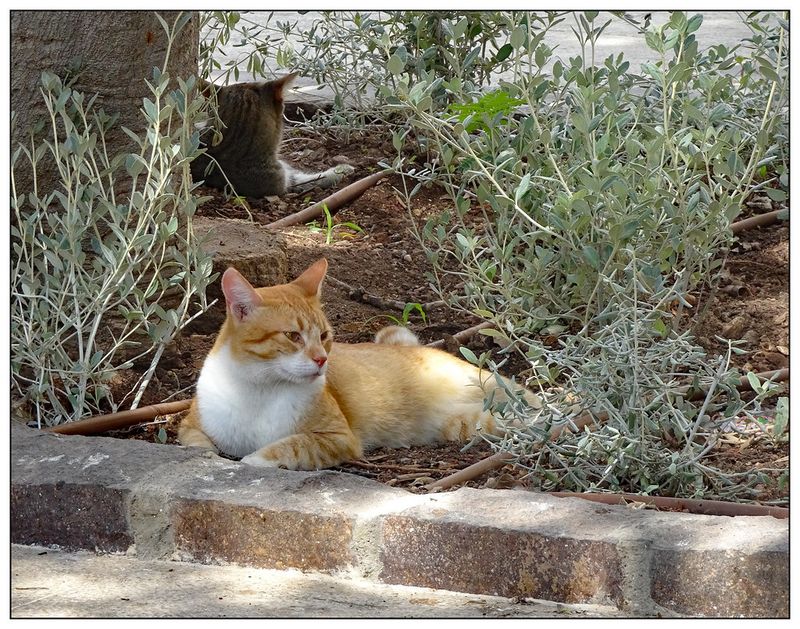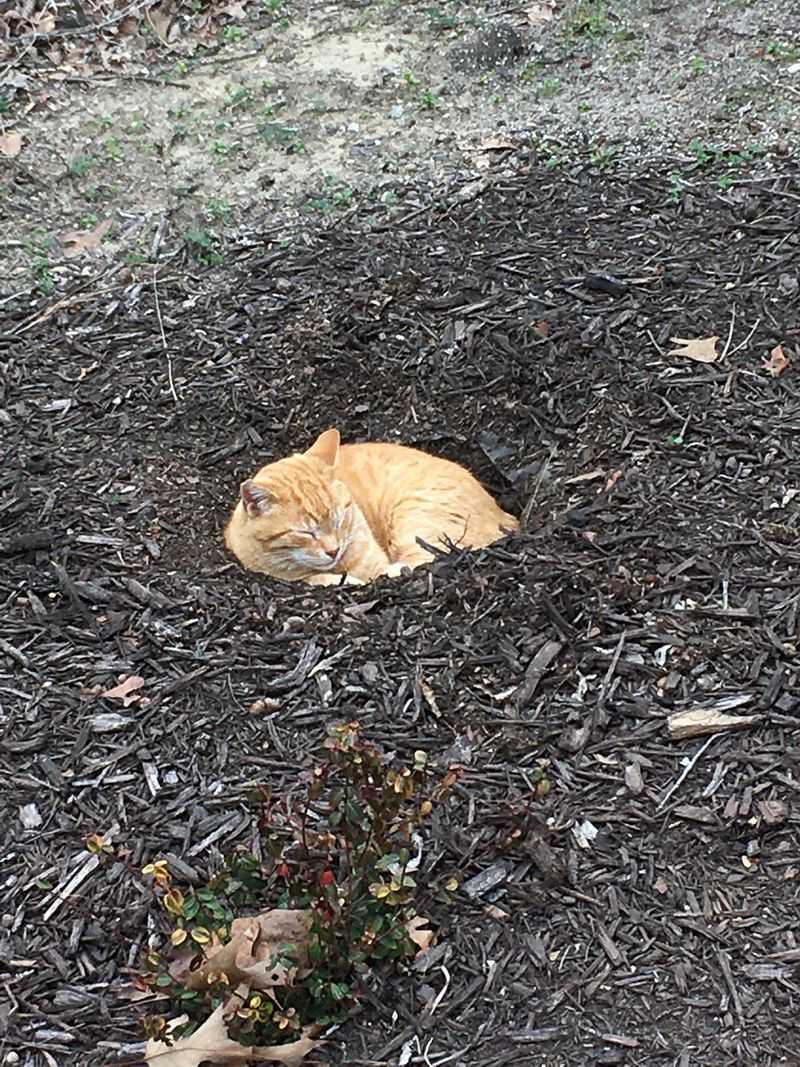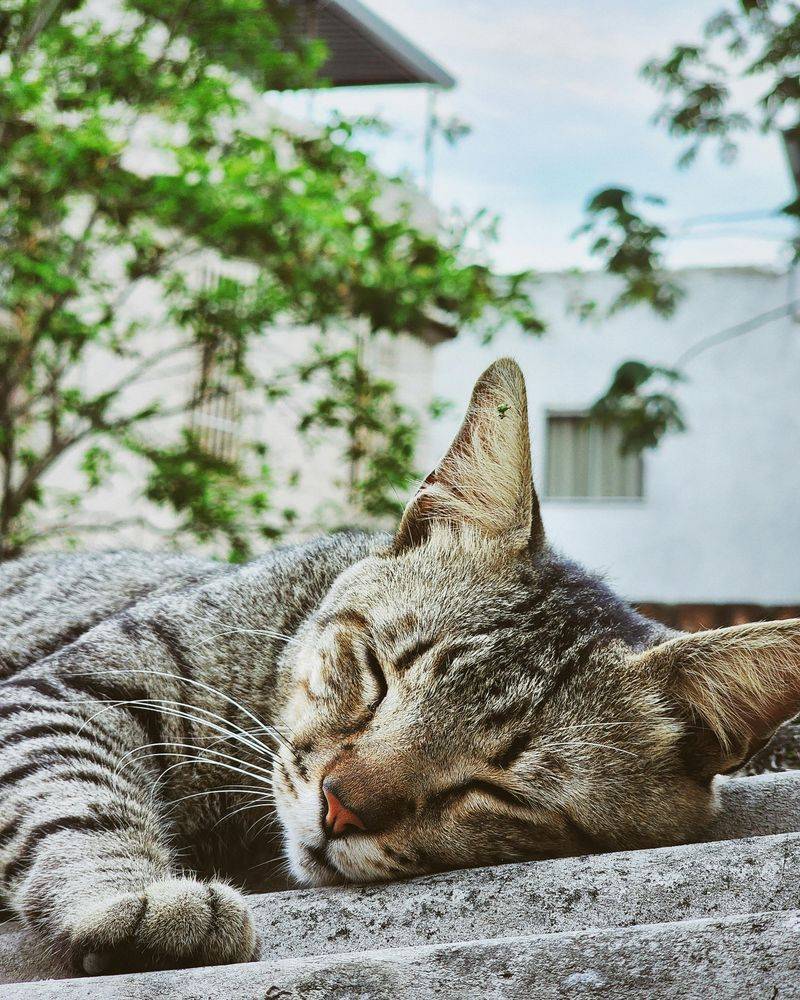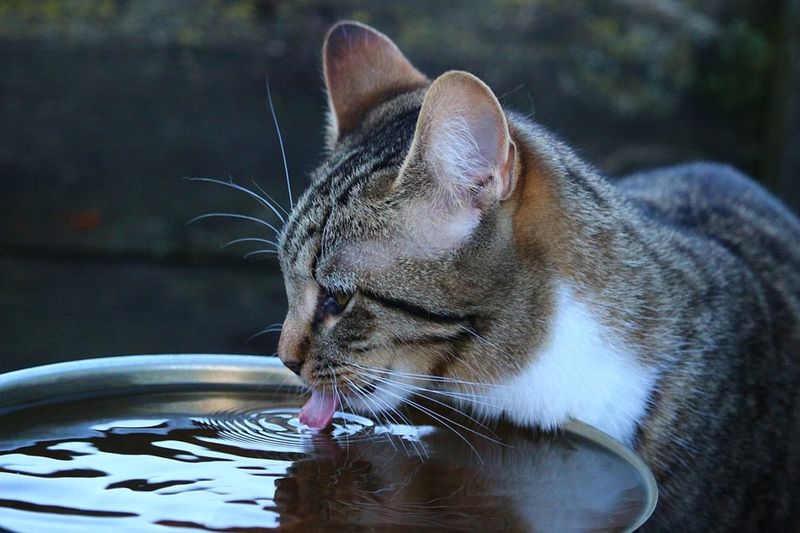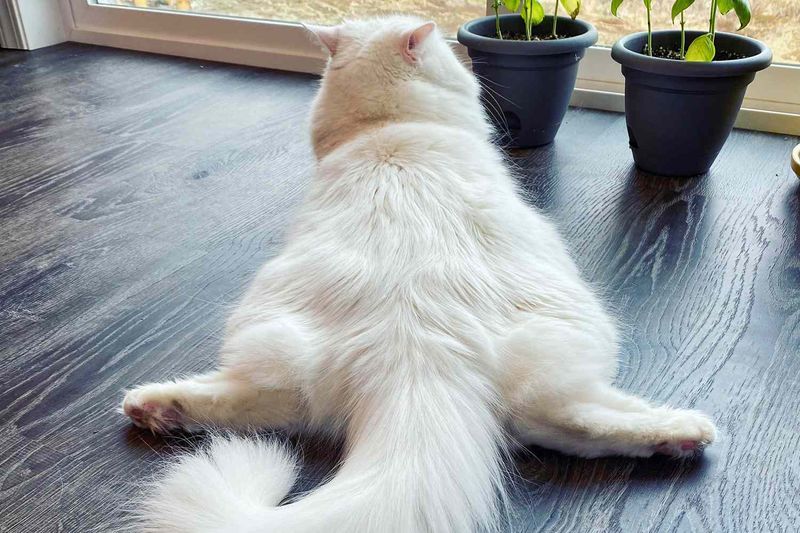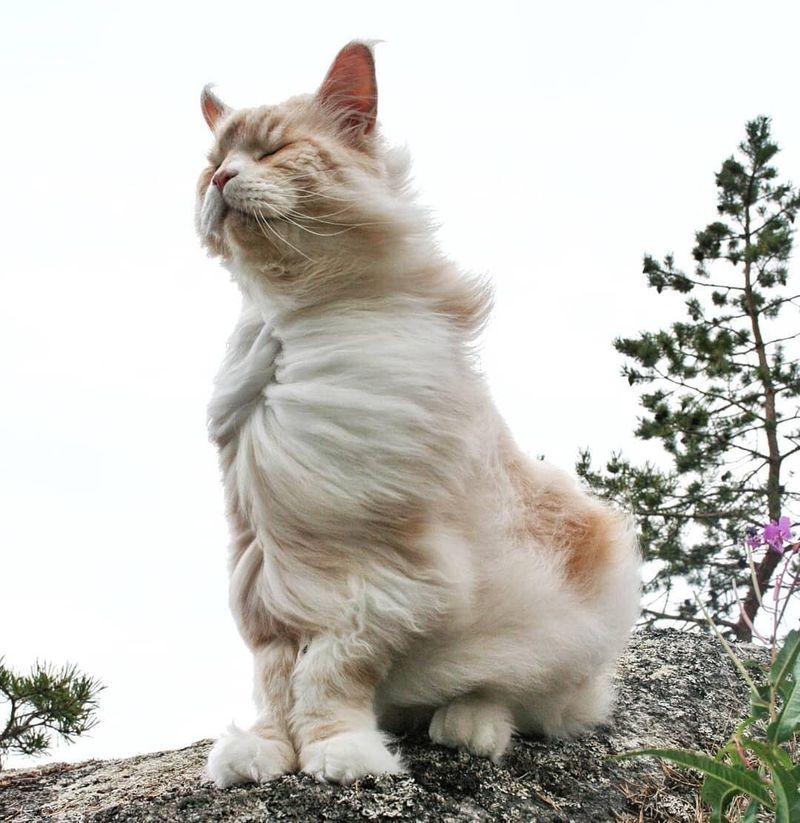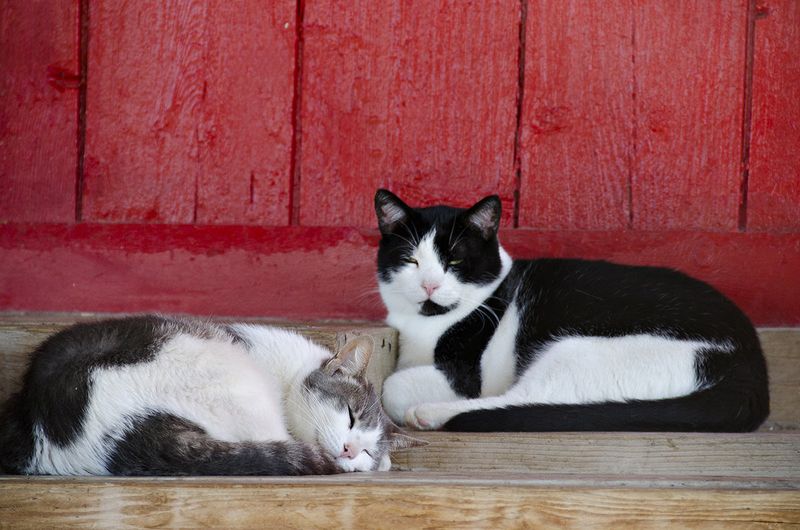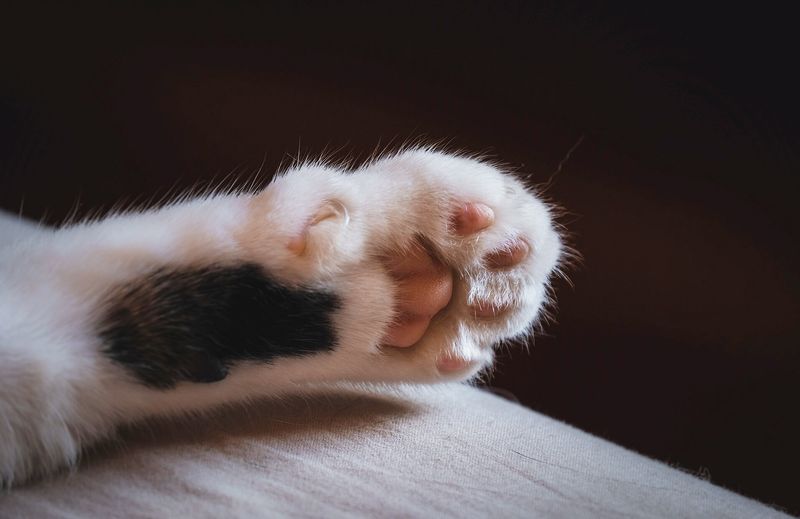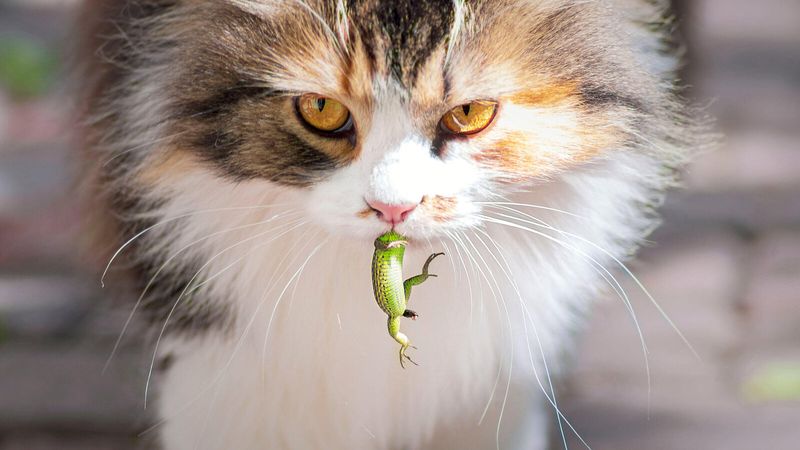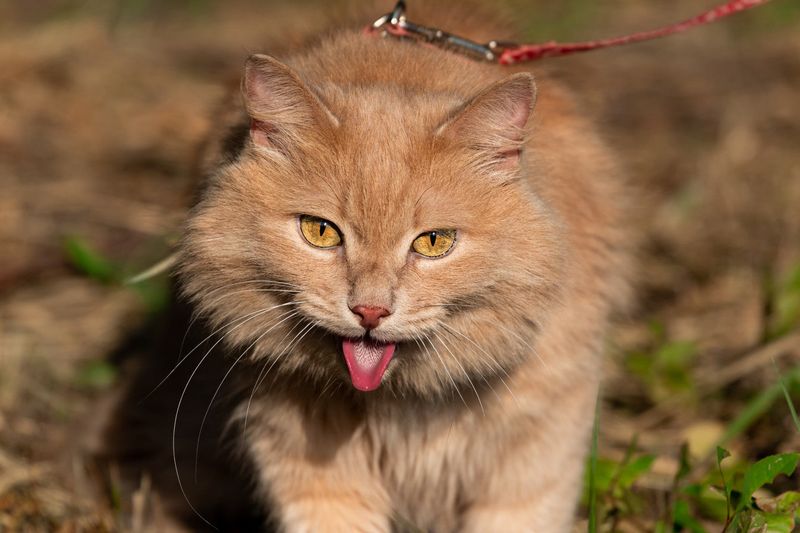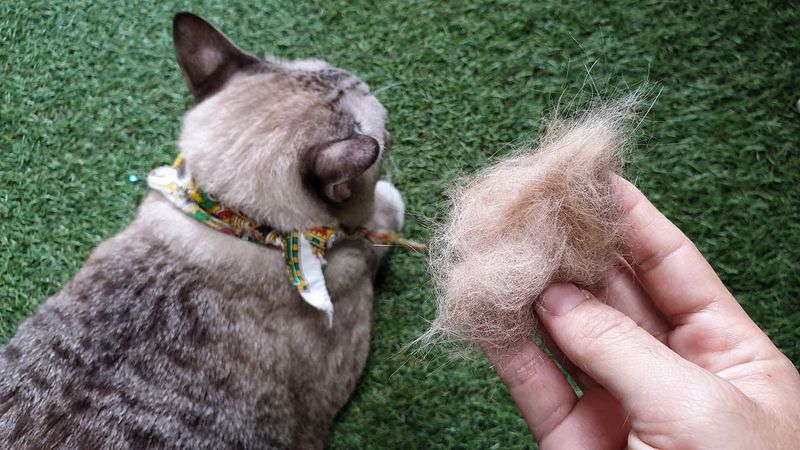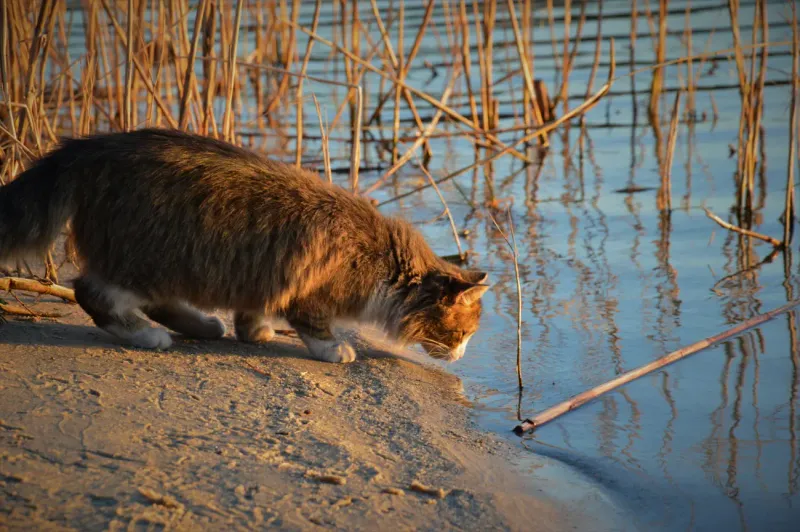📖 Table of Content:
- 1. Seeking Shade
- 2. Digging Cool Spots
- 3. Resting During the Hottest Hours
- 4. Drinking More Water
- 5. Licking Their Fur
- 6. Spreading Out Their Bodies
- 7. Finding Windy Spots
- 8. Sleeping in Cool, Dark Places
- 9. Using Evaporation
- 10. Avoiding Hot Surfaces
- 11. Adjusting Their Diet
- 12. Panting
- 13. Cooling Their Paws
- 14. Shedding Excess Fur
- 15. Staying Near Cool Water Sources
Outdoor cats are naturally resourceful when it comes to dealing with hot weather. Unlike indoor cats that have the comfort of air conditioning, outdoor felines must rely on their instincts and environment to stay cool. As temperatures rise, they adjust their habits, seeking out shade, water, and other natural cooling methods. Their survival skills help them navigate the heat without overheating, but extreme temperatures can still pose a risk.
Understanding how outdoor cats stay cool can be helpful for cat owners, animal lovers, and those who care for stray or feral cats. Many of their techniques are clever adaptations that allow them to regulate body temperature without direct human intervention. However, in scorching conditions, even the most resourceful cats may struggle to keep cool. Recognizing the ways cats beat the heat can help people provide extra support when needed, such as offering fresh water or shaded resting spots.
From seeking out breezy areas to adjusting their activity levels, outdoor cats have various ways to cope with summer heat. They instinctively avoid direct sunlight, stay hydrated, and even modify their behavior to conserve energy. Some cats may get creative, using their surroundings in surprising ways to find relief from the heat. Learning about these natural cooling strategies offers insight into feline survival instincts and how humans can assist in ensuring their comfort during the hottest months.
1. Seeking Shade
Finding shade is one of the simplest yet most effective ways for outdoor cats to stay cool. They instinctively retreat under bushes, trees, porches, or even cars to escape the scorching sun. These shaded areas provide relief by blocking direct sunlight and reducing the surrounding temperature. Dense foliage, in particular, offers a cool, natural barrier against heat. Cats often rotate between different shady spots throughout the day as the sun shifts. A well-chosen shaded area can be up to 10-15 degrees cooler than sunlit spaces. This natural instinct helps them avoid overheating and conserves their energy during hot weather.
2. Digging Cool Spots
Scratching at the dirt may seem like a simple habit, but for outdoor cats, it serves an important purpose. They instinctively dig small holes in soft soil, which exposes the cooler earth beneath the sun-warmed surface. The freshly unearthed dirt remains at a lower temperature, allowing them to rest in a naturally cool spot. Some cats even choose areas under bushes or near walls where the ground stays cooler for longer. Lying in these shallow depressions helps their bodies dissipate heat more efficiently. The combination of shade and the cool ground creates a comfortable resting place. This technique is especially useful when temperatures soar and there are limited other cooling options available.
3. Resting During the Hottest Hours
During peak midday heat, outdoor cats instinctively reduce their activity. Instead of roaming or hunting, they conserve energy by finding a quiet, shaded place to nap. Their natural rhythms align with cooler parts of the day, making them more active during dawn and dusk. This behavioral shift prevents them from overheating and allows them to maximize their comfort. Unlike humans who may push through the heat, cats know that slowing down is key to staying cool. Their bodies are designed to rest and recover when temperatures are most extreme. By avoiding strenuous activity in the afternoon, they effectively manage their body temperature.
4. Drinking More Water
Hydration is essential for all animals, and outdoor cats instinctively seek out water sources during hot weather. They may drink from puddles, birdbaths, or outdoor water bowls left by humans. In some cases, they even find moisture from dew on plants or damp surfaces early in the morning. Since cats tend to have a lower thirst drive than dogs, staying hydrated in extreme heat is even more crucial. Access to clean, fresh water helps regulate their body temperature and prevents dehydration. If water is scarce, they may rely on the moisture content in prey or food. Ensuring an outdoor cat has access to water can significantly improve their ability to stay cool.
5. Licking Their Fur
Grooming is more than just a cleanliness habit—it also helps cats cool down. When they lick their fur, the saliva evaporates, creating a natural cooling effect similar to sweating in humans. This process helps dissipate heat from their bodies, especially when temperatures rise. Cats instinctively increase their grooming frequency during hot weather as a way to regulate their body temperature. The act of licking also provides momentary relief, as it spreads moisture across their fur. While it may seem like a small adjustment, this behavior plays a vital role in keeping them comfortable. Frequent grooming ensures they can manage the heat even without access to external cooling sources.
6. Spreading Out Their Bodies
Instead of curling up tightly, cats stretch out their bodies when they need to cool off. This position maximizes airflow around them and allows heat to escape more efficiently. By lying on their side or spreading out on a cool surface, they expose more of their body to the air. Cats may also press their bellies against cool ground, tile, or shaded concrete for additional relief. Unlike in cold weather, when they conserve heat by tucking in their limbs, they do the opposite in the summer. This simple adjustment in body posture helps them manage their temperature naturally. It’s a clever way to stay cool without much effort.
7. Finding Windy Spots
Breezes provide a natural way for cats to stay comfortable on hot days. Many outdoor felines position themselves in areas where they can take advantage of the wind. Open spaces, under porches, or near the sides of buildings are common places they seek airflow. By choosing a location with good ventilation, they enhance the cooling effects on their fur. The movement of air helps evaporate moisture from grooming, making them feel cooler. A steady breeze, even a light one, can significantly reduce the feeling of heat. Cats instinctively recognize this and adjust their resting spots accordingly.
8. Sleeping in Cool, Dark Places
A dark, enclosed space provides relief from the sun’s intensity. Outdoor cats often nap in cool garages, sheds, or under decks where temperatures are lower. These spots remain shaded for most of the day, offering long-term comfort. Dark areas also tend to retain less heat than sun-exposed locations. Cats are drawn to these cool retreats because they help regulate their body temperature efficiently. If the area is well-ventilated, it can provide additional relief from the summer heat. Finding such spots is an instinct that helps them stay safe and comfortable.
9. Using Evaporation
Rolling in damp areas or slightly wetting their fur can provide temporary relief from the heat. Some outdoor cats instinctively take advantage of moist soil, dew-covered grass, or even light rain. As the water on their fur evaporates, it cools them down naturally. This process mimics how humans sweat, though cats do it in a different way. While not all felines engage in this behavior, those that do benefit from the cooling effects. It’s another example of how adaptable cats are to their environment. Nature provides solutions, and cats make the most of them.
10. Avoiding Hot Surfaces
Scorching pavement or metal surfaces can be dangerous for cats in summer. They instinctively avoid walking on overly hot surfaces, opting instead for shaded pathways. Grass, dirt, and wooden decks are more comfortable options since they don’t absorb as much heat. When moving between locations, cats often take indirect routes to minimize exposure to hot ground. Their paw pads are sensitive, so they are careful about where they step. If necessary, they may pause in cooler areas to let their paws recover. This behavior helps them prevent burns and discomfort.
11. Adjusting Their Diet
Food digestion generates internal heat, so cats often eat smaller meals during summer. Consuming less food reduces the energy their bodies need to process meals. Many outdoor cats instinctively shift their eating patterns to cooler times of the day. If prey is abundant, they may hunt early in the morning or at night rather than midday. The lighter diet allows them to stay active without generating excess body heat. Unlike in winter, when they need extra calories, summer is about conserving energy. This natural adjustment keeps them comfortable.
12. Panting
Though rare, panting is a last resort for cooling down. Cats may briefly open their mouths and breathe rapidly when they are overheated. This behavior is similar to how dogs regulate their body temperature. By exhaling warm air and inhaling cooler air, they reduce internal heat. However, excessive panting can be a sign of distress and dehydration. If a cat is panting persistently, it may need immediate relief from the heat. While not a common method, it remains an emergency cooling mechanism.
13. Cooling Their Paws
Since cats release some heat through their paw pads, they may seek out cool surfaces to stand on. Resting their paws on damp soil, shaded tiles, or even stepping into water can help regulate temperature. Their bodies absorb the coolness, which spreads to the rest of them. Some outdoor cats instinctively dip their paws into puddles or streams to cool off. This subtle technique helps them stay refreshed during hot days. Because their paws are one of the few areas where they can release heat, this trick is essential. Cats use every available method to beat the heat.
14. Shedding Excess Fur
Summer brings natural shedding, which helps cats remove excess insulation. A thinner coat improves air circulation, making it easier to stay cool. This shedding process is a biological adaptation to changing seasons. Cats instinctively groom more often to help loosen dead fur. Removing these layers allows better airflow to their skin. Even outdoor cats who are not brushed by humans benefit from seasonal shedding. It’s their body’s way of preparing for the heat.
15. Staying Near Cool Water Sources
Whether it’s a pond, fountain, or shaded water bowl, outdoor cats often linger near cool water. These locations provide both hydration and a temperature drop. The presence of water slightly cools the surrounding air. Cats may rest nearby to take advantage of the cooler microclimate. Being close to a reliable water source also ensures they can drink as needed. Water is crucial for preventing heat-related stress. It’s no surprise that many cats are drawn to it in the summer.

